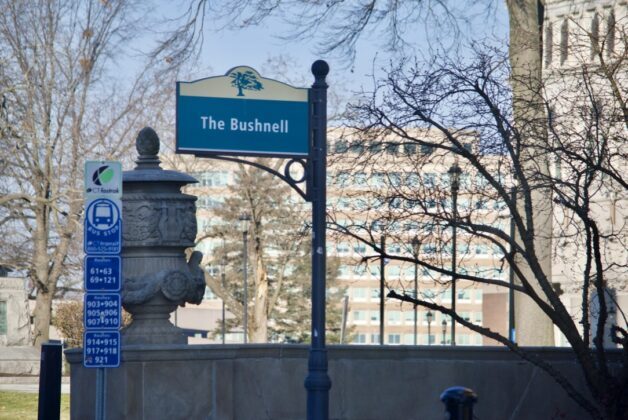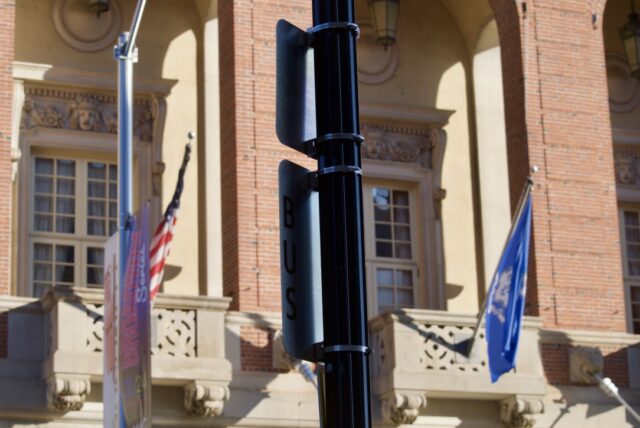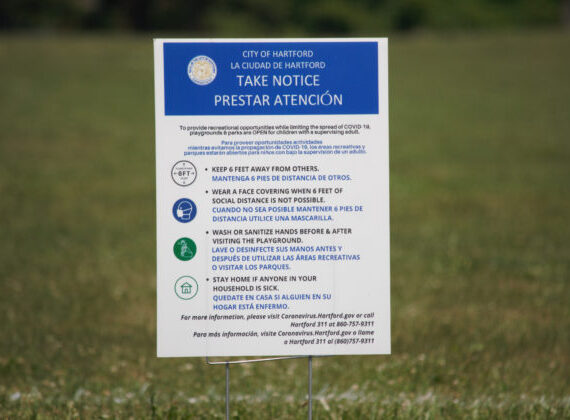If you are, let’s say, an arts venue that claims to be “dynamic” and a catalyst to “promote economic development and build a sense of community,” do you:
a) worry about losing a little parking, and do so consistently, sparking rumors that a whole partnership was created over a decade ago to essentially help you jealously guard parking spaces that are a visual and economic drain on the neighborhood, or,
b) be actually dynamic by behaving as if your cultural venue is not only in the center of the city, but accessible by means besides private automobile?
To be more specific, do you begin actively promoting public transportation, proactively telling patrons that there are two — inbound and outbound — bus stops directly in front of your venue?
Do you unbundle the cost of parking from ticket prices, letting patrons see the true cost of the “free” parking? Do you separate the cost of parking from ticket prices so that patrons arriving by active and public transportation don’t have to pay for a service they aren’t using?
Instead of listing bus information dead last on the directions and parking page of your website, do you place it first, complete with map showing location of bus stops and route numbers? Do you include information about train service, which is about a 10-minute walk from the theater, and less for those who use the free DASH bus? Do you then follow this with an equally detailed description of where the bicycle parking is located? Do you put car parking and valet services last?
Do you partner with CTtransit to expand service on some routes, even if only for special, larger events?
Could you encourage suburban patrons to split their trips, parking in lots outside of the city and taking the bus in from there? For this Saturday afternoon’s performance of The Nutcracker, the bus is already a viable alternative for those in parts of Wethersfield, Newington, and West Hartford. Someone coming from Wethersfield could park at the Stop & Shop at Jordan Lane/Berlin Turnpike and take the 61 bus for a Saturday afternoon performance of The Nutcracker. A West Hartford patron could do the same, leaving their car at Charter Oak Marketplace and riding the 63 bus. Patrons from Newington can park at the CTfastrak Newington Junction Station and ride the 69 or the faster 121 bus.
This is strictly what’s available to those who are unable or unwilling to walk or roll far; patrons who can move a few more blocks have many other bus options open to them. For instance, those who can walk ten minutes get access to the 101, 102, and 128 buses. This serves those in New Britain, Bristol, Plainville, and anyone in the vicinity of West Farms. None of this is privileged information; it’s all coming directly from the CTtransit page. It’s an opportunity for the performance venue to partner with owners of those parking lots, and should not pose any hardship if patrons select their spaces with respect to those shopping in the plazas. I already checked, and saw no historic record of theater patrons having wild tailgating parties.
Green building initiatives are nice, but by 2025, let’s aim for 50% of patrons arriving to performances using active and public transportation. That’s not a huge ask of an urban venue, and one known as Connecticut’s premiere performing arts center.
Climate Possibilities is a series about climate mitigation, along with resilience, resistance, and restoration. It’s about human habitat preservation. It’s about loving nature and planet Earth, and demanding the kind of change that gives future generations the opportunity for vibrant lives. Doomers will be eaten alive, figuratively. All photographs are taken in Hartford, Connecticut unless stated otherwise.




Susan Masino
Great questions. Not difficult. Thank you.
Seeds – Real Hartford
[…] Our cultural landscape is not where we should look to see the status quo being held up, being grippe…. It’s not where we should see outmoded norms grasped by those fearing that they are also outdated. […]